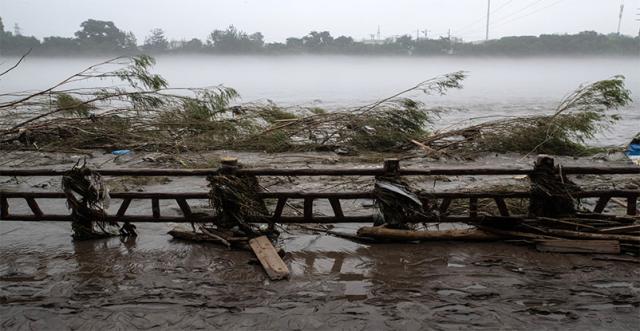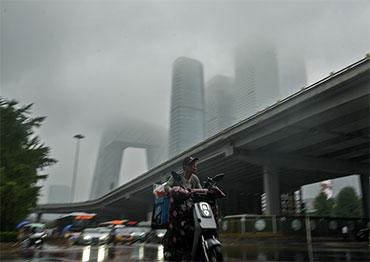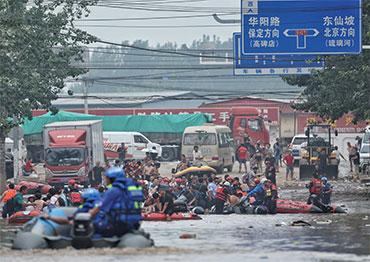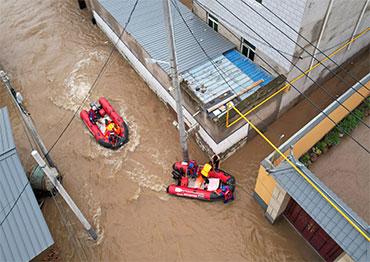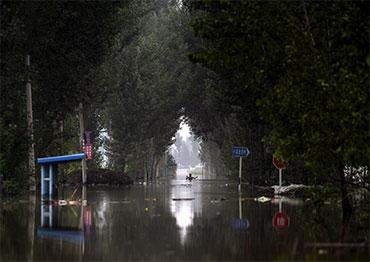recipitation levels across Beijing, Tianjin and central and southern parts of Hebei Province reached 100-600 millimeters during the severe rainstorm caused by the remnants of Typhoon Doksuri from late July to early August. Compared to rainstorms covering similar areas over the past 60 years, the amount of precipitation surpassed the previous two recorded during the showers on July 21, 2012 and July 20, 2016 and was second only to the torrential rains that flooded the Haihe River Basin of northern China in 1963.
The analysis was released on August 3 by the National Climate Center (NCC) affiliated to the China Meteorological Administration. The NCC is responsible for monitoring climate change and extreme weather events while forecasting meteorological disasters for precautionary measures since it was established in 1995. As early as February, the NCC issued an initial warning, predicting that multitudes of strong extreme weather events would affect the country.
Chao Qingchen, director-general of the NCC and co-chair of the Global Climate Observing System Study Group, has long been involved in the negotiations of the United Nations Framework Convention on Climate Change and Intergovernmental Panel on Climate Change (IPCC). Over the past few years, she has been calling for growing social awareness of extreme weather events while building a climate-resilient society, and adapting to and mitigating the effects of climate change.
“The casualties of the disasters are too overwhelming to allow us to think that we are fortunate enough to stay safe,” Chao warned in an interview with NewsChina after the storm. The key to building a climate resilient city, she stressed, is to be “highly aware of and serious about the natural disasters and their severe consequences as a result of climate change,” and improve data-sharing and coordination between different departments on forecasting and pre-warning of possible disasters in urban areas. She proposed that laws and regulations on climate mitigation should be amended, which means reducing climate change by decreasing the amount of greenhouse gases going into the atmosphere, and adapting urban and rural areas to the new realities of extreme weather events.
NewsChina: What trends do you observe for extreme precipitation events in China? In the context of climate change, will China become more prone to extreme rainstorms?
Chao Qingchen: The frequency and degree of extremely huge precipitation events have increased across our country since the start of this century. Theoretically, when the temperature increases by 1 C, atmospheric water content grows by 7 percent. Over the past few years, even though there hasn’t been a notable change in total precipitation, its intensity per hour has increased dramatically. Simply put, if in the past we tended to experience more light rain [over a longer period], now we get much more torrential rain [over a shorter time].
Geographically, strong precipitation, which occurred more often in the south of the country, is now increasing in the north. For instance, the latest rainstorm in the north is not only a result of seasonal rains that usually fall between late July and early August, but also due to Typhoon Doksuri. Over the past few years, it has been increasingly obvious that typhoons are starting to track northward. This has brought a higher probability of strong precipitation in the north.
However, habituated to frequent droughts, infrastructure in the north is vulnerable to strong precipitation. For example, compacted ground surfaces, lack of permeable ground surfaces [due to urbanization] and the loose network of canals and rivers are not able to cope with the destruction wrought by extreme rainstorms. Amid rapid urban development, the underground drainage system, which is essential for urban flood discharge, is inadequate even if it’s been upgraded. It can’t relieve disasters in overpopulated living conditions. With dense populations, buildings and other facilities, cities are surrounded by humid heat waves, which escalate the frequency and degree of rainstorms. Northern cities will face the risk of higher exposure and vulnerability to heavy precipitation.
Based on our forecast models, we think precipitation in China will see an obvious upward trend. From 2026 to 2045, Beijing, Tianjin and cities in Hebei Province are projected to experience more rain in summer and in terms of annual average. There will be more strong precipitation events, some of which may last for five consecutive days. There will be an increase in the number of rainy, moderately rainy and heavy rain days. Torrential rains will expand to more places that are characterized by urban sprawl.
NC: How would you evaluate local governments’ forecasting and precautionary measures during the storm? What should be improved?
CQ: The forecasting of the rainstorm in Beijing, Tianjin and Hebei Province this time was good enough for its accuracy in its timing, degree and regional scope. In Beijing, the alarm was issued two days in advance and the red alerts were updated in the ensuing days. Residents in areas likely to be affected were well informed with alert messages about the possible disaster and dangerous places.
But this does not mean we are able to make accurate forecasts every time. This rainstorm, which was the strongest in the 140 years since meteorological records began, is an extreme case in Beijing. Scientifically, the difficulty in forecasting and ability to issue warnings of extreme weather in advance is a global problem. We don’t have many historical records of extreme precipitation. The mechanisms by which each case of extreme precipitation is formed are different. Factors that could cause disasters, including the multi-level interaction of meteorological systems, terrains and urban underlying surfaces, vary in each case. There are common rules and uniqueness for systematic scientific analyses.
By and large, our knowledge about extreme weather events still needs improving. And we need to be more precise and provide more details on forecasting the intensity, scope and length of time of precipitation. In addition, more time is needed for residents to get prepared. To achieve this, breakthroughs are needed in many technologies.
But weather forecasting is not the only weakness. Coordination and data sharing among different departments is another weak link. For instance, because of the different underground drainage systems and anti-flood facilities along rivers, the same amount of precipitation may have different effects in different streets and communities. So forecasts should not only indicate the possible level of precipitation, but also integrate hydrological data, disaster statistics and the designs of underground drainage networks to make a comprehensive “disaster-based” forecast. Coordinating this will involve different departments with different data, which is hard to share right now due to different standards [each uses to collect data]. Proper warning forecasts and emergency measures to deal with calamities caused by extreme meteorological events are not possible without coordination among different departments and good governance of cities.
Another big problem this latest storm event revealed in North China is that residents in the north are concerned less than their southern counterparts about the danger of heavy precipitation. I’ve seen lots of northern villagers who historically have had to deal with drought underestimate the severity of upcoming rainstorms and their consequences. This is a problem in many cities in the north even after they were deluged by several torrential rainstorms in recent years. The rainstorms this time will alarm northern urban residents and officials again. But no one can say they will be well-prepared to deal with the next heavy precipitation event.
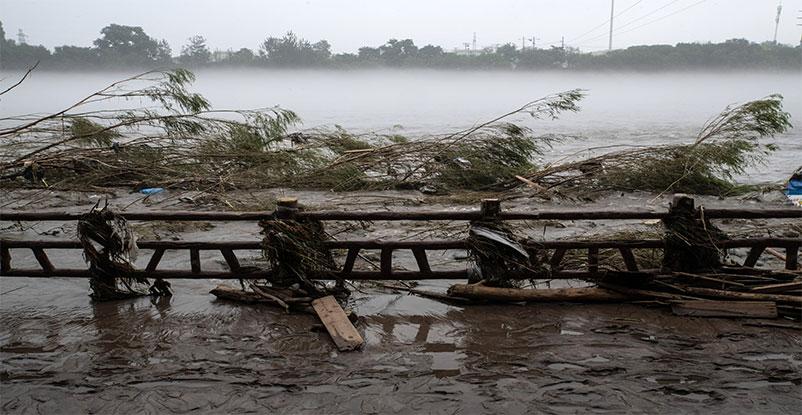
 Old Version
Old Version
